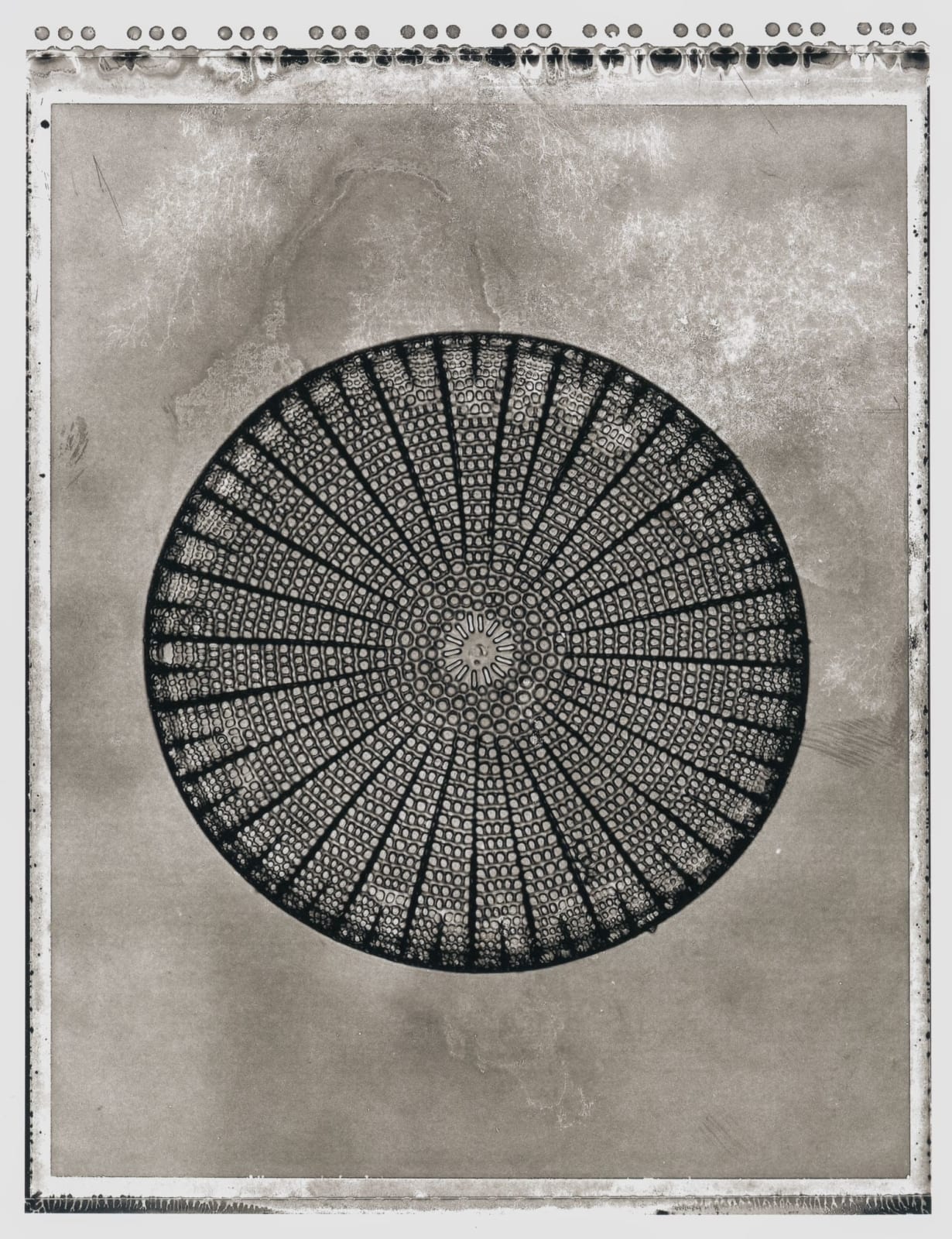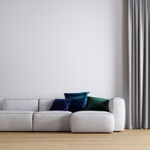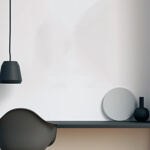FERMÉ du 28 novembre au 13 décembre
Jan C. Schlegel German, 1965
Plate #43, 2024
Série: Life on Earth
Platinum print
38 x 28 cm
15 x 11 in
15 x 11 in
Edition of 10 plus 1 artist's proof
Using a microscope, Polaroid 55 film which he then turns into a platinum print, Jan Schlegel's series 'Life on Earth' focuses exclusively on phytoplancton, the very foundation and basis of...
Using a microscope, Polaroid 55 film which he then turns into a platinum print, Jan Schlegel's series "Life on Earth" focuses exclusively on phytoplancton, the very foundation and basis of life. It is the lowest level of the food chain and it is thanks to these microscopic plants that we are able to breath and live. Through photosynthesis, 80 percent of the oxygen is produced by plankton. Due to the pollution of our oceans, micro plastic, the increase of carbon dioxide in our atmosphere and the effects of global warming, oceans have already lost 40 percent of plankton and it is expected that every year we will lose an additional 1 percent. The Atlantic Ocean is the most affected and marine researcher consider the Atlantic Ocean already as dead.
With this series Schlegel wants to show the beauty and uniqueness of Plankton. By giving them visibility, they are not an abstract concept foreign to us. There are many different kind, some bigger and some smaller but they all have one thing in common: we depend on them. All life on earth depends on them.
Diatoms, a type of phytoplancton, are often described as being made of glass because their cell walls are composed of silicon dioxide, similar to glass. The cell walls, known as frustules, are intricate and highly structured, providing both protection and structural support to the diatoms.
The frustules are not only beautiful but also highly functional, offering protection and aiding in light regulation for photosynthesis. Diatoms, like the one in the image, come in different shapes and sizes, always displaying the structure of their frustules. Sometimes, these structures are so perfectly arranged that they appear computer-generated. No two diatoms look alike.
This particular diatom is quite rare and is called the "Wheel of Life". Its perfectly aligned frustules make it almost unbelievable that it is part of our natural world.
With this series Schlegel wants to show the beauty and uniqueness of Plankton. By giving them visibility, they are not an abstract concept foreign to us. There are many different kind, some bigger and some smaller but they all have one thing in common: we depend on them. All life on earth depends on them.
Diatoms, a type of phytoplancton, are often described as being made of glass because their cell walls are composed of silicon dioxide, similar to glass. The cell walls, known as frustules, are intricate and highly structured, providing both protection and structural support to the diatoms.
The frustules are not only beautiful but also highly functional, offering protection and aiding in light regulation for photosynthesis. Diatoms, like the one in the image, come in different shapes and sizes, always displaying the structure of their frustules. Sometimes, these structures are so perfectly arranged that they appear computer-generated. No two diatoms look alike.
This particular diatom is quite rare and is called the "Wheel of Life". Its perfectly aligned frustules make it almost unbelievable that it is part of our natural world.
Joignez-vous à notre liste d’envoi
* denotes required fields
We will process the personal data you have supplied in accordance with our privacy policy (available on request). You can unsubscribe or change your preferences at any time by clicking the link in our emails.








